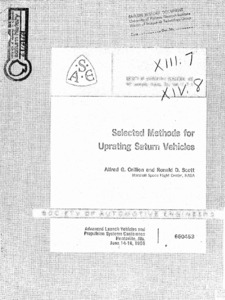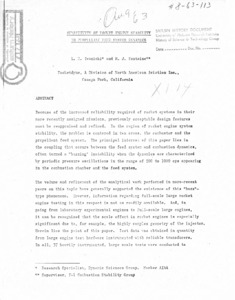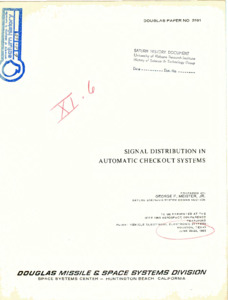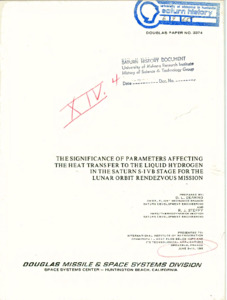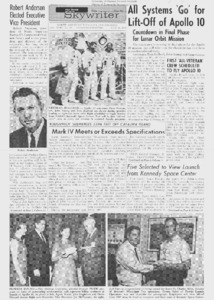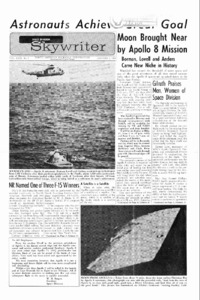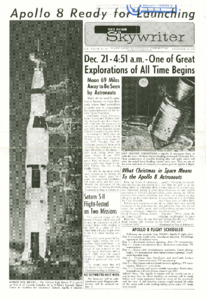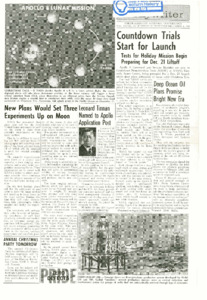
Browse Items (970 total)
Sort by:
-
"Selected methods for uprating Saturn vehicles."
This paper will discuss selected methods for increasing the Saturn launch vehicle payload capabilities. These methods involve system changes or additions that give large step performance'increases aver those which can be obtained by product improvements. The selected philosophy of approach and the established designed systems wil1,be described, as well as anticipatedsystem concepts that may be used to increase the Saturn vehicles' capabilities. -
"Sensitivity of rocket engine stability to propellant feed system dynamics."
Because of the increased reliability required of rocket systems in their more recently assigned missions, previously acceptable design features must be reappraised ad refined. In the region of rocket engine system stability, the probles is centered in two areas, the combustor and the propellant feed system The principal interest of this paper lies in the coupling that occurs between the feed system and combustion dynamics, often termed a "buzzing" instability then the dymics are characterized by periodic pressure oscillations in the range of 200 to 1000 cps appearing in the combustion chamber and' the feed system. -
"Signal distribution in automatic checkout systems."
This paper deals with several selected aspects of the signal distribution in automatic checkout systems. These are: 1) The use of relay matrices as control elements; 2) The inclusion of self-checking capabilities; 3) Problems of systems integration. These aspects are not unique to automatic checkout systems. However, due to the nature of automatic checkout systems as presently being designed around digital circuitry, they find either fuller or different applications than in other types of systems. Also, while they are on the surface somewhat disconnected in nature, they tend to interrelate during the implementation of an automatic checkout system. -
"The significance of parameters affecting the heat transfer to the liquid hydrogen in the Saturn S-IVB stage for the lunar orbit rendezvous mission."
The Saturn S-IVB stage has a requirement for orbiting around the earth for up to 4.5 hours with approximately 60 percent of its initial propellant remaining at the end of the coast (prior to restart) . Extensive analyses must be performed to insure that this requirement is met. Both the maximum and minimum heat transfer rates are important because the maximum rates affect the hydrogen boiloff losses and thus the initial propellant loading requirements. The minimum rates are important because the boil off gases are used to maintain a minimum axial thrust level by venting the gases continuously through aft facing nozzles. This provides for a settling of the propellant throughout the orbital coast and alleviates the need for periodically venting the tank under zero gravity. -
"Six-engine cluster of the Saturn S-IV rocket."
A press-release detailing the successfuly firing and the specfic launching information of the Saturn I-V rocket-launch. -
"All systems 'go' for liftoff of Apollo 10."
News article detailing that the final preparations for the lift-off of the Apollo rocket have been completed. -
"Moon brought near by Apollo 8 mission."
News article detailing the recovery of the Apollo 8 crew after its successful mission. -
"Astronaut trio sees 'successful' Apollo 9 mission."
News article detailing the hope from the Apollo 9 crew that their mission will be a success. -
"Dec. 21 - 4:51 a.m. -One of great explorations of all time begins."
News article detailing how Apollo 8 is ready for launch and the anticipation surrounding it. -
"Countdown trials start for launch."
News article detailing how the crew of the Apollo 8 are preparing for launch with a "dry run."
